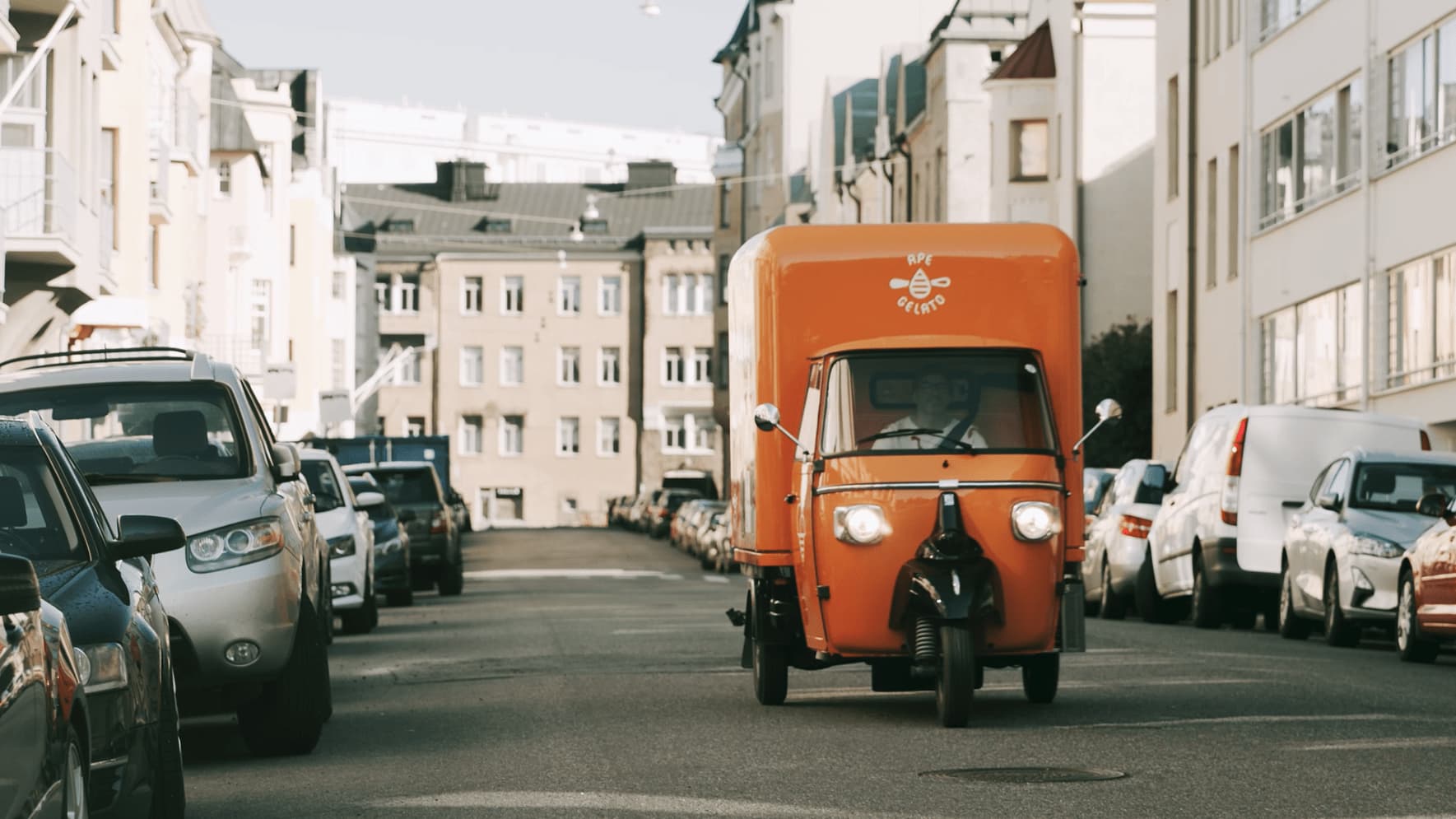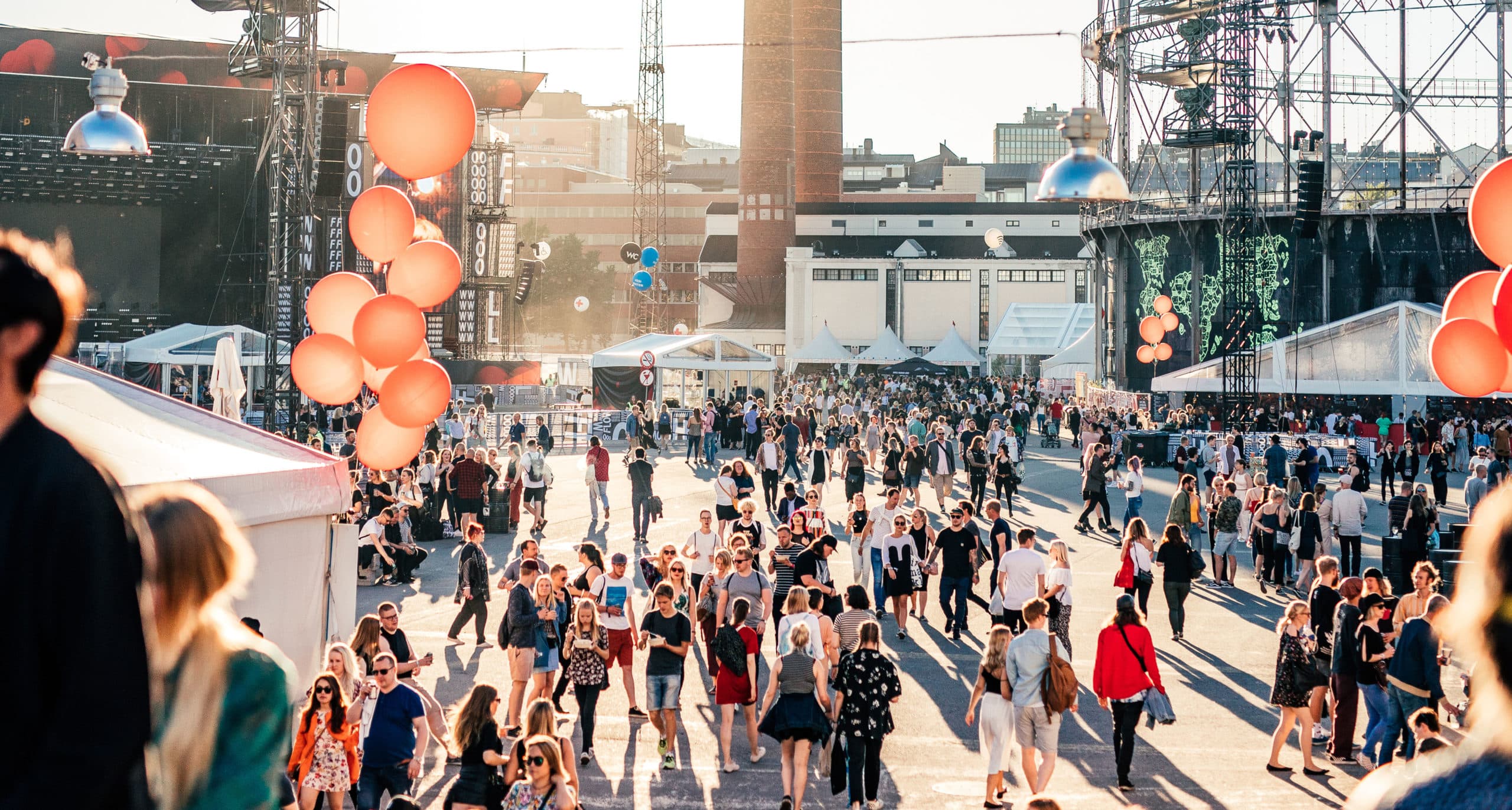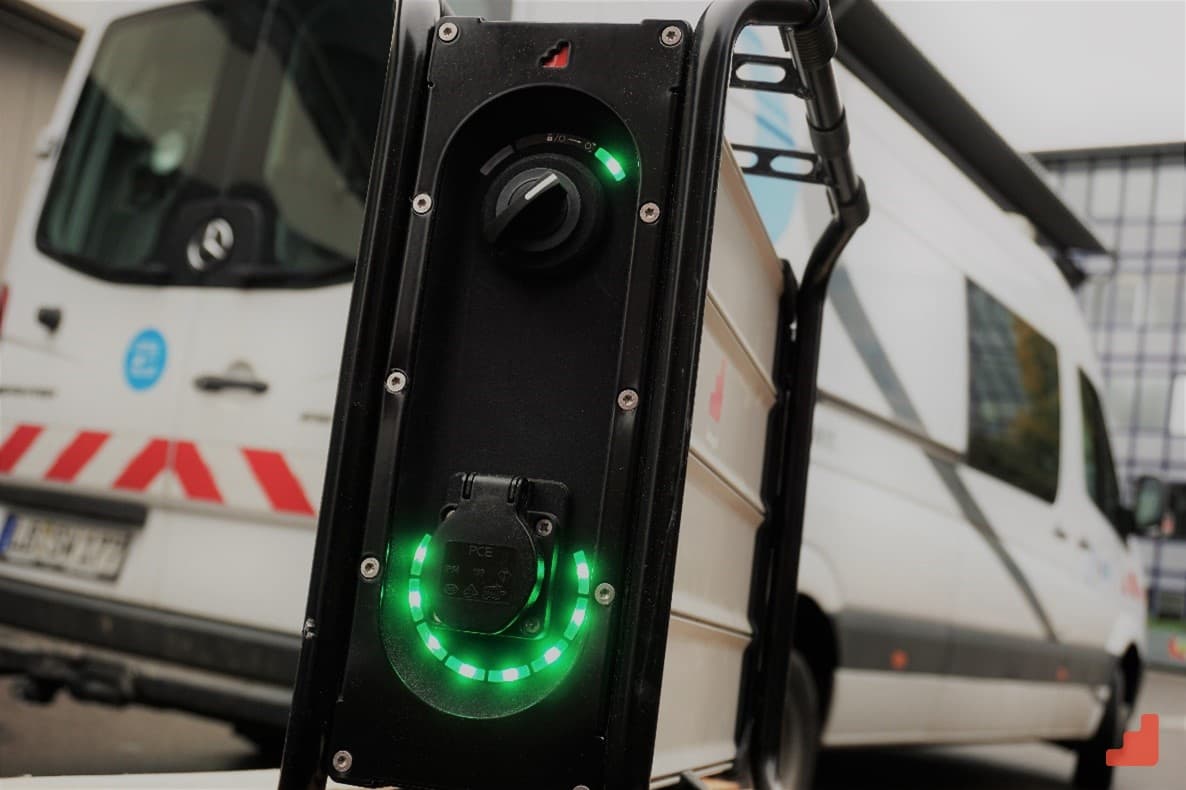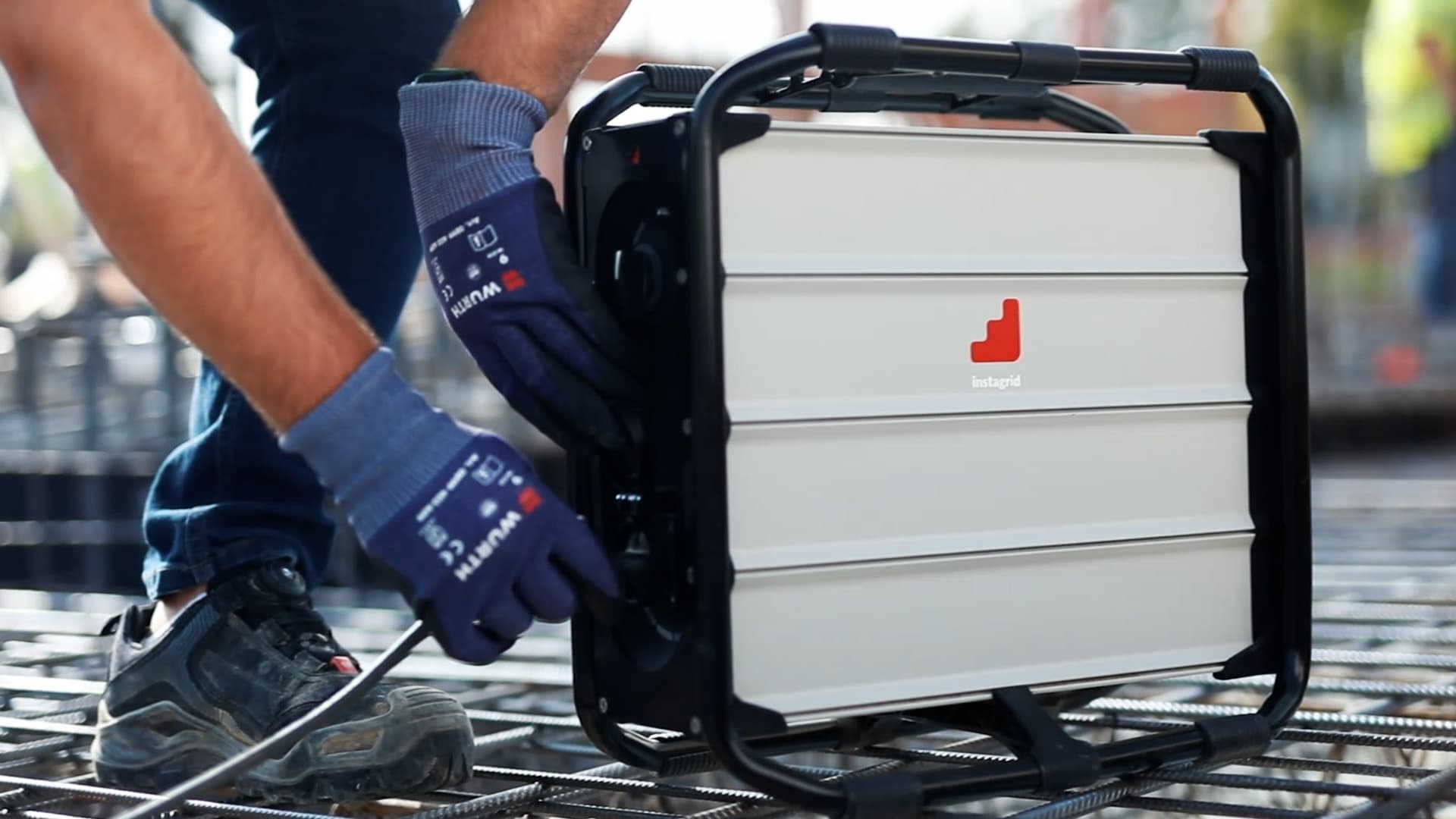In 2020, we tested the instagrid portable power system with multiple professionals from different industries. By testing the system with professionals from completely different fields, we are able to focus on the features in our product development that are the most important for different professionals. For everyone who tested instagrid system in 2020, a decrease in direct emissions and portability were both important factors. But there were differences in the most important features: for some industries, the silence of the unit is the most important, whereas for another industry the IP54+ rating raises as the winner.
In the upcoming year, we will continue testing with multiple different industries and develop our product further. In which industry you would like us to test the instagrid portable power system next?
1. Mobile catering – improving work comfortability
Most important feature: silence
During the 2020 summer we tested the instagrid system with a mobile gelato truck, Ape Gelato, in Helsinki, Finland. Ape Gelato works off-grid, which requires them to have their own electricity with them at all times. When it comes to the appliances needing electricity, Ape Gelato trucks have gelato freezer, coffee machine, and decorative lights. Before instagrid, Ape’s solution for electricity was a diesel-powered generator.
Replacing diesel generator with instagrid portable power system brought three main improvements to Ape’s workdays: working without direct emissions, working in silence, and work comfortability due to the small size. From these three, silence was the clear number one. The previous diesel generator had a constant noise of 90dB, whereas instagrid is completely silent. “Silence allows us to focus much better on our work, and our customers are enjoying it as well”, says Emiliano, Ape Gelato seller.
Read the entire story we did with Ape Gelato from here.

2. Restoration – efficiency through flexibility
Most important features: small size, emission-free
We wanted to test the instagrid battery in the field of restoration and stonemasonry, and partnered up with Steinmetz Schönfeld in Germany to test the system.
Sustainability has always been an important value for Schönfeld as a company. The business of restoring and preserving, instead of building new, creates a fundamental value of a more conscious and sustainable building. The owner of the company aims to remove all fossil fuel generators from their company and go fully electric. This is why being able to cut down emissions by using instagrid instead of fossil fuel generators was one of the most important features for them.
In addition to emission minimization, instagrid battery brought efficiency to the workdays. In most of the projects, the workers need to work without an electricity grid or with a very old electrical infrastructure. This requires either extra time spent on securing the safety of the grid, or the use of loud and heavy diesel generators. When the buildings have an old electrical infrastructure, it requires a separate specialist to assist in securing any potential electrical hazards. Coordination with outside personnel and the time needed for the set-ups always slows down the workflow. With instagrid battery, the workers can start their work faster and on their own schedule, which brings clear time savings and flexibility.
Read the entire story we did with Steinmetz Schönfeld from here.

3. Event production – flexibility to the workflow
Most important feature: portability
Regarding the event industry, we tested the instagrid system with Helppari, a company installing networks and cashless payment systems in event areas, at two festivals in Finland.
When building up festival networks, Helppari comes across always the same problem: they are missing electricity in the places where they would need it. Often, this will reflect back of their schedule: overtime working and sleepless nights right before the festival. With instagrid battery, Helppari was able to have the needed electricity in any place of the festival, and in addition test their main links and networks in advance. Normally, they need to wait for the main electricity of the festival to be provided a day before, which means they can’t do their tests before the day before the festival.
Read the entire story we did with Helppari from here.

Photo by Jussi Hellsten, Flow Festival
4. Installations – clear time savings
Most important feature: portability
Installation work often requires pulling extension cords to get the needed energy or relying once again on fossil-fuel generators. We tested the usability of instagrid system with a German solar panel installation company, Solmey.
In their work, the most crucial tool to power is a ladder lift, which lifts the solar modules to the roof. Typically, the installation crew would have to access the electric sockets inside the house, always agreeing with the house owner on the day and time of the installation. 50-meter cable drums in the back of the car ensure, that access to a power socket is always obtained. Typically, installation takes two entire working days, with cables being pulled in-and-out of the house.
When using the instagrid system, the workflow for residential installation services got much easier. Setting up of the work area became more comfortable and flexible. Instead of bothering their clients and looking for power sockets inside the house, the installation crew could start working immediately. For Solmey, using instagrid saved 2 hours from their workday.
Read the entire story we did with Solmey from here.

5. Municipal utility – cost savings due to weight reduction
Most important features: small size, emission-free
SWLB in Germany was the first municipal utility company to test the instagrid power system in 2020.
The ability to minimize emissions and avoid the use of fossil-fuel generators was one of the most important features for SWLB. One of SWLB’s main goals is the continuous conversion to sustainable energy sources. During the one-week test phase with instagrid, SWLB was able to save 120 kg of CO2 emissions.
The small size of instagrid brought also economic advantages when comparing to fossil-fuel generators. Transporting instagrid batteries instead of conventional generators makes SWLB service cars, which sometimes transport several generators, much lighter – and therefore, brings cost savings due to the reduced amount of fuel needed.
Read the entire story we did with SWLB from here.

6. Carpentry – emission-free working in nature
Most important features: emission-free, portability
In 2020, we also tested the instagrid system with a carpentry professional, Albtisch, who work completely off-grid in a nature area, where the use of fossil fuel generators is not allowed.
For Albtisch, avoiding direct emissions completely when using the instagrid system was naturally the most pressing feature. Working without direct emissions allowed them to work in this beautiful nature area, but also to support their own sustainability values as a company.
instagrid battery brought also flexibility to Albtisch’s workdays due to the portability of the system. Thanks to the small size of the system, they can easily load the battery into their car, drive out to nature, and start working.
Read the entire story we did with Albtisch from here.

7. Consumer market – work flexibility without concern about the weather conditions
Most important features: waterproof, silence
Weekly markets in the heart of cities are important parts of city cultures. We wanted to test the instagrid system on a weekly market in Stuttgart, Germany, to see the benefits the system could bring for the market owners.
The location for Stuttgart weekly market doesn’t have a proper infrastructure, so the market sellers have to rely on fossil-fuel-powered generators in their work. The use of inefficient, fuel-powered generators in comparison to the actual energy demand for the stands is highly disproportional and goes against the ecofriendly values and efforts of the city.
As instagrid solution also has an IP54+ rating, the market stand sellers can place the system wherever they are at, without worrying about the daily weather conditions. One of the market owners pointed out, that they have wanted to switch their fuel-powered generators to battery versions for a while already but had not found a solution that would work in rainy weather before instagrid.
Read the entire story we did with Stuttgart market from here.

